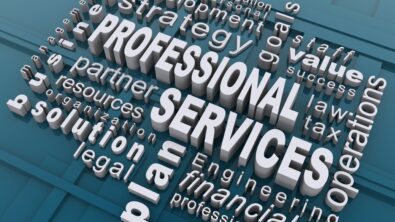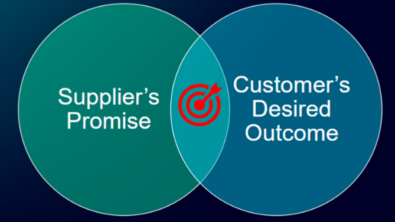Onboarding strategy impacts employee retention

Job openings are near an all-time high, according to the Washington Post, allowing job seekers to be pickier about the opportunities they pursue in today’s market. To develop a productive and valuable workforce, today’s hiring managers must have an onboarding strategy that attracts and retains talented employees. According to TSIA, “employee engagement and retention have always been critical to an organization’s success.”
Retention is crucial to protecting companies’ time and money invested in new employees and it all starts with onboarding. So, first impressions matter…a lot. The first step in retaining employees is establishing a good onboarding program. Onboarding introduces new hires to the company, its culture, the work environment, roles and responsibilities and enablement resources to help get them up and running. The most successful programs engage and educate participants while instilling a strong sense of collaboration and teamwork. This approach helps retain new hires by embracing and enabling them.
Engagement levels tend to be highest during the first three months of employment as new hires typically are in the throes of the “honeymoon period.” If engagement levels are low early on, chances of improving them in the future are slim.
Overcome complexity while creating a connection for new hires
Bringing new employees into the fold of your partner organization is tricky enough. But the task becomes even more complex when onboarding is shared between you and the organization you partner with. This dynamic requires aligning each employee with your partner’s processes, systems and approach while integrating the new hires into your own environment.
Such partner relationships increase the importance of a well-designed onboarding plan. The plan must integrate the shared business objectives and knowledge to create a strong connection between the new hire and the two organizations. That’s why it’s incumbent upon both organizations to take ownership of onboarding to ensure a seamless and successful process.
According to general onboarding statistics from Sapling HR, 58% of organizations say their program centers on processes and paperwork. While paperwork and clerical tasks are necessary, experts have realized that the best employee onboarding programs are structured and strategic, not just administrative. Programs should focus on people and their enablement, not just paperwork.
When COVID-19 swept across the planet in 2020, it compounded the complexity of onboarding new employees because people were no longer meeting face to face. According to Gartner, the immediate response by employers worldwide was to turn to a virtual onboarding strategy. While that addressed what many perceived as a temporary situation, Gartner cites many executives’ belief that technology will maintain a permanent place in the onboarding process.
Online onboarding strategy keeps employees on the right path
“Technology has provided us with tremendous tools for communication throughout the employee experience. One area that is of particular importance is the new hire onboarding process,” according to CareerBuilder.
Nearly every company leverages technology during onboarding to eliminate paper-based processes and make administrative tasks less tedious. However, we encourage our partners to use technology to facilitate enablement during onboarding. This approach can help ensure key information is delivered in timely, easy-to-follow steps, allowing new hires to build upon their knowledge as they progress.

With a thoughtful approach and the right platform, content is customized to be role-relevant and delivered online so new hires can learn at their own pace. You can add automated reminders for regular check-ins with their direct managers and their partner managers to confirm that new hires are progressing, meeting learning expectations and have access to people to answer any questions. Using technology and the people behind it will help create a strong connection between the employee, the partner organization and the vendor. The employee will quickly recognize the value of his/her role and how it contributes to the success of the partner organization and its alliance with the vendor.
Partner organizations are not alone in addressing the critical onboarding phase. We, at Siemens, created a prescriptive, technology-driven, 90-day partner onboarding program called PowerPaths. The onboarding paths are tailored to multiple common job roles within partner organizations and delivered in four easy-to-follow phases, giving the new hire the right information at the right time.
This program ensures successful and consistent onboarding for Siemens partners worldwide. Putting all the relevant role-based onboarding information with links to tools and programs in one place makes navigating the onboarding process much quicker and easier for new employees. This removes the bottlenecks that come from paper-based enablement or lengthy searches for the right materials. Additionally, new hires receive PowerPaths reminders over eight weeks to keep them progressing on the right path during their learning journey.
We have taken the guesswork out of the orientation process for our partners. Online access to onboarding information ensures a streamlined educational itinerary. This flexible, always-on approach to training can be useful to new hires and partner owners as a talent recruitment tool.
Siemens helps partners develop high-performing employees
In addition to PowerPaths’ easy-to-navigate content, the program also creates the foundation to build future enablement. When new hires reach Phase III of their PowerPaths learning journey, they are introduced to the role-specific Partner Development Program. This training program is designed to help our partners achieve certified specializations in sales, presales, marketing, customer success, support and services, providing a seamless transition from onboarding content to skills and competency learning. As these competency-based training programs are updated yearly, partners can be assured that Siemens is helping to keep their skills honed for continued success and professional fulfillment.

A great onboarding experience reduces the rate of employee turnover, allowing your organization to realize a new employee’s talents now and long into the future. Just as the partner business plan is customized, our automated enablement training is also tailored to the needs of specific partner roles. Siemens believes that not all partners and their staff are created equal. We believe mutual success relies on us providing high-quality, consistent training programs that our partners can integrate into their individual business ecosystems as they see fit.
Make the path to success clear
Point your new hires in the right direction by introducing them to the Partner Portal and have them enroll in PowerPaths.
About the author

Starr Hill-Bennett is a Senior Partner Executive at Siemens Digital Industries Software focused on enablement and readiness initiatives for new and existing partner individuals. She and her team spearheaded the role-based partner onboarding program and work to continually improve and stay abreast of market trends, business climate, and required skills to prepare partners for success.
Comments
Leave a Reply
You must be logged in to post a comment.



Starr is a builder of best-in-class onboarding arches that have a proven record of driving fast success for entire organizations and individuals. What a powerful capability. Contact her – no matter if you are a vendor, partner, or customer, as she’s always happy to help, share, and advise. Very few in the global space equal her depth.
My personal view is that a strong approach and focus on onboarding pays off in hard metrics: RETENTION, employee happiness, initial success, pipeline/win rates, customer success, renewals, and GROWTH.
Excellent post highlighting the significance of on-boarding programs. Sadly we don’t see enough organizations making investments to evolve their on-boarding processes. Recruiting and hiring new employees is not only costly but also time consuming, and even more frustrating when new hires don’t work out. The arguments made above are spot on – having formalized, prescriptive role-based on-boarding increases employee retention, morale, accelerates employee productivity and increases the likelihood of an organization getting on ROI from their investment in personnel.
Aside from customers, our employees are the keystone of our success. I was fortunate enough to support Starr as she developed the PowerPaths partner on-boarding program. This best-in-class program has helped thousands of our partners and their personnel in our ecosystem achieve more, quicker and cost effectively. Failure to develop structured on-boarding processes will leave many organizations struggling to attract and maintain employees in an increasingly competitive job market.
Starting with a new company, or even a new team within the same company, can either be an adjustment or a struggle. A good onboarding experience – one that equally addresses culture and process – makes all the difference. Starr understands this fact and does a wonderful job explaining how our partners can leverage technology to keep their new hires on track for success from Day 1.